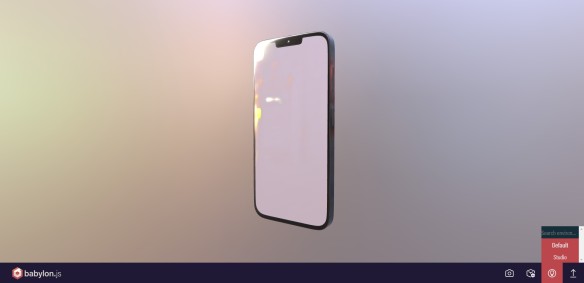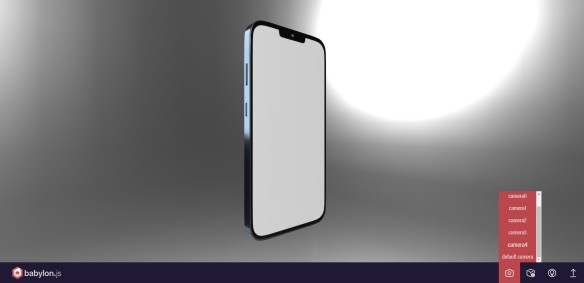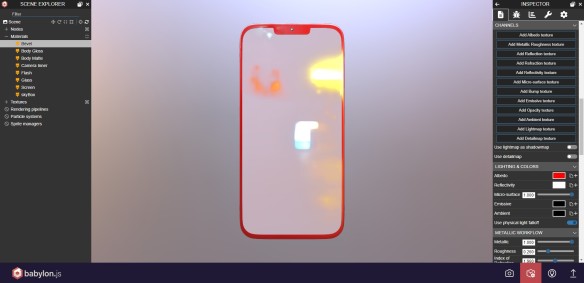Currently in beta but set to launch officially later this year, After Effects will soon allow you to render and manipulate 3D objects directly in the software, removing the requirement to export huge TIFF sequences from Cinema4D. Unfortunately with my Cinema4D student license nearing its end, I needed to export my models to the desired GLB format pronto. Wanting to ensure this procedure had been done correctly, but with the AE feature still in development, Babylon.js stepped up to be my saving grace with its wonderful Sandbox.

Incredibly available free of charge, and open source via GitHub for complete user customisation, Babylon.js is a 3D web-based rendering engine that takes full advantage of HTML5. Using the tool is incredibly simple, testing my GLB exports by dragging each file into the browser window. After minimal loading my model appeared, complete with materials and reflections, gloriously lit in a pastel-hue environment. The reflections are authentic, mapped from an HDRI, though if these don’t suit your needs, information from your own HDRIs can be accessed via a bottom menu and switched in with ease.

Whilst the camera angle can be manipulated manually by dragging around with the mouse, all existing camera data is imported and accessible via the menu below. This was perfect for demo purposes, allowing me to rapidly switch between a front, side, back and angled view, as in my original C4D file. You can also zoom in and out, as is standard procedure, using the scroll wheel.

Where Sandbox truly comes into its own is via the ‘Inspector’ panel, allowing you to customise your model and do a deep-dive into its creation. On the left you are given you option to select any present material in the model whilst the right panel lets you customise them fully, changing colour, opacity, reflectivity and much more besides. In addition to this you can inspect the number of polygons and vertices in a model, export as various different formats and so much else, I’m only scratching the surface.
Perhaps a little overwhelming in the end with such a plethora of options, I only required a quick visual confirmation of my models thankfully and thus to this end, it impressed. The fact that an engine of this quality has been achieved via the web is phenomenal, and has helped me understand the power of HTML5, present in so many blog posts I’ve written before.

You must be logged in to post a comment.